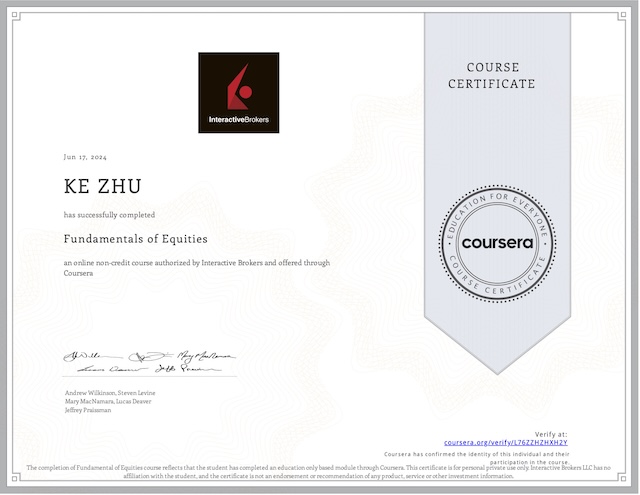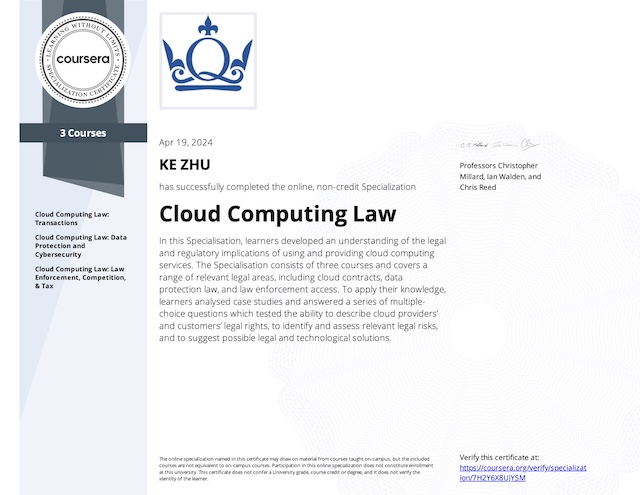Important tax issues arise throughout the corporate lifecycle: its formation, operation and liquidation. The formation of a corporation generally involves the transfer of assets and liabilities by one or more persons in exchange for stock in the newly formed corporation.
Property Transaction
IRC subchapter O: Gain or Loss on Disposition of Property defines the rules for property transactions. Topics include acquisition and disposition of property, recognition of gains and losses, character of gains and losses and recapture provisions.
Acquisition of Property
In general, the cost of an asset with the useful life of more than one accounting period is capitalized rather than being treated as an expense. On the balance sheet, the property is listed as an asset and expensed over time:
- Tangible personal and real property (other than land) is recovered with depreciation, which is determined using the Modified Accelerated Cost Recovery System (MACRS).
- Land is not depreciated for tax purposes.
- Intangible property is recovered with amortization.
- Natural resources is recovered with depletion.
The initial recovery amount is called original basis or cost basis:
Original basis
= Amount paid for asset
+ All expenses incurredWhen assets are not purchased, for instance when the property is converted from personal to business use, special basis determination rules apply. Once an asset is placed into service, that is used in a trade or business, cost recovery can begin. The amount that has yet to be recovered is called adjusted basis:
Adjusted basis
= Original basis
+ Capital improvement to property
- Prior accumulated cost recovery deductionsDisposition of Property
Disposition of property is a realization event. Tax payers must determine the amount of any gain or loss realized, which involves adjusted basis and amount realized from the disposition.
Amount realized
= Money received
+ Fair market value of any other property received from the buyer
- Selling expenses
+ Buyer's assumption of liabilities
- Seller's assumption of liabilitiesWhen disposed property is subject to a loan or mortgage, the seller receives debt relief because the buyer assumes a liability that the seller no longer has to pay back, which increases the seller’s total amount realized from the transaction. Likewise, any liabilities assumed by the seller on any property received from the buyer reduce the amount realized because the seller has a new liability to pay back.
Finally realized gain or loss on disposition of property is the difference between the amount realized and the adjusted basis.
Realized gain or loss
= Amount realized
- Adjusted basisAfter determining realized gain or loss, the issue is whether to recognize it on the tax return.
“Except as otherwise provided in this subtitle, the entire amount of the gain or loss, determined under this section, on the sale or exchange of property shall be recognized”.
Code section 1001(c)
In an effective tax system, the incidence or tax burden ideally falls on taxpayers with the economic wherewithal to pay. In a Like-Kind Exchange, two taxpayers essentially trade similar assets. If there is a realized gain on the exchange, it makes little sense to impose tax on the gain because all else equal, the taxpayer with the gain would have to sell the new asset receive to obtain cash to pay the tax. The imposition of tax would therefore negate the need for the exchange in the first place. However, if a taxpayer receives additional property (called boot) besides the like-kind asset that provides the ability to pay tax, then it makes sense to impose tax to the extent of the additional property received.
Character
If there’s realized gain or loss on the disposition of property, is it recognized? If recognized, what is the character? Ordinary or capital? The character of a recognized gain or loss is affected by recapture provisions. It determines how a gain or loss is treated for federal tax purposes (based on the type of property involved).
| Ordinary gain or loss | For both individuals and corporations Gains: taxed at ordinary tax rates. Losses: offset ordinary income that is taxed at ordinary tax rates. |
| Capital gain or loss | Long-term (> 1 year) or short-term (≤ 1 year) depending on the holding period For individual: Gains: taxed at preferential tax rates Losses: limited loss deductions For corporations: Gains: no preferential tax rates Losses: no deduction in excess of capital gains. The capital characterization affects the netting of gains and losses, as well as the calculation of carry forwards and carry backs. |
Character is ultimately determined by the type of property involved, there are 3 types of property:
| Ordinary assets | Inventory, account receivable, other assets if they have been used in a trade or business for 1 year or less. |
| §1231 assets | Depreciable assets and land used in business held for more than 1 year (Assets held for less 1 year are still ordinary assets). |
| Capital assets | Not ordinary or §1231 assets Holding period is not a determining factor. |
Recapture (between Unrelated Persons)
Recapture here refers to the re-characterization of gains (not losses) on the disposition of a Section 1231 asset. It changes only character, not total amount recognized. The computation of recapture depends on the type of Section 1231 asset that is disposed:
| Pure §1231 assets | Land only. No recapture provision apply. Gains and losses on this sub-type of assets receive the basic tax treatment of Section 1231: – Gains are characterized as long term capital. – Losses are characterized as ordinary. |
| §1245 assets | Personal property and amortized intangible property, includes things such as equipment, vehicles, copyrights and patents. – Gains on the disposition of these assets may be subject to recapture. 1. The gain is characterized as ordinary, not long term capital, to the extent it was created by depreciation or amortization deductions. This is because cost recovery deductions reduce adjusted basis and, all else equal, increase the amount of realized gain. 2. Any remainder of the gain is treated as Section 1231 gain, which may be characterized as long term capital gain once netted with other Section 1231 items in the tax year. |
| §1250 assets | Depreciable real property include office buildings, rental homes, apartments, and warehouses. For individuals: – Gains 1. The amount recaptured as ordinary income is limited to Additional depreciation (which is defined as the excess of accelerated depreciation deductions over the amount that would have been deducted under the straight line method and depreciation taken on property held for one year or less.See Unrecaptured §1250 gain, below. For corporations: – Gains 1. A modified version of these rules exist for corporations in §291. The amount recaptured as ordinary is 20% of the lesser of Recognized gain or Accumulated depreciation.2. Any remainder of the gain is treated as Section 1231 gain, which may be characterized as long term capital gain once netted with other Section 1231 items in the tax year. |
An example of recapture of an §1245 asset. Assume a corporation sold a machine with an original basis of $8000 for $12000, the prior depreciation expense on the machine amounts to $5000.
Adjusted basis = Original basis - Depreciation
= $8000 - $5000 = $3000
Recognized gain = Realized gain
= Amount realized - Adjusted basis
= $12000 - $3000 = $9000A machine is a §1245 property, the gain is ordinary to the extent it was created by prior depreciation deductions ($5000 in this case). The remaining $4000 gain receives long term capital character treatment under §1231, assuming there are no other §1231 items to net it against.
Ordinary §1245: $5000
Long term capital §1231: $4000An example of recapture of an §1250 asset. Assume the same corporation sold a depreciable real property instead of a machine, all of the Realized gain and Recognized gain calculations remain the same, $9000. However, under §291, the amount recaptured as ordinary income is different:
Ordinary §291: min($5000, $9000) × 0.2 = $1000
Long term capital §1231: $9000 - $1000 = $8000Unrecaptured §1250 Gain
The §1250 recapture rarely applies to individuals because all real property is depreciated using
the straight line method and such property is not often held for one year or less. As a result, individuals treat a gain from the disposition of §1250 property as a §1231 gain.
The gain is combined with other §1231 gains or losses. If after netting all §1231 items for the year, the gain on the sale of a §1250 property is a long term capital gain, the portion of the gain caused by prior depreciation deductions is taxed at a maximum rate of 25%.
§1231 gain if ultimately characterized as a long term capital gain
1. The portion caused by prior depreciation deductions
is called Unrecaptured §1250 gain, and
is taxed at a maximum rate of 25%
2. The remaining portion
is taxed at standard applicable long term capital gains rates.§1239 Recapture (between Related Persons)
If a taxpayer sells property to a related person and the property is depreciable in the hands of the buyer, the entire gain (regardless of the property type) on the sale is recaptured as ordinary income to the seller under §1239.
Without this rule, taxpayers could create tax savings by selling appreciated assets to related persons who would then receive depreciation deductions on a higher basis amount.
Non-Recognition Provisions
A corporation can obtain assets by borrowing from lenders, or issuing shares of stock in exchange for cash and/or property.
- When corporate stocks are exchanged for cash.
- Essentially, the shareholder makes a cash purchase of stock and records a cost basis in the new shares.
- When corporate stocks are exchanged for property (other than cash).
- A share holder may have to recognize a gain or loss equal to the difference between the fair market value of the stock received and the adjusted basis of the property transferred to the corporation, i.e.
Recognized gain or loss = Stock value - Adjusted basis. - If shareholder recognizes these gains as required by Code §1001(b), it is rather costly to choose the cooperate form. The application of property transaction rules would impede corporate formation.
- A share holder may have to recognize a gain or loss equal to the difference between the fair market value of the stock received and the adjusted basis of the property transferred to the corporation, i.e.
Code §1032 (Exchange of stock for property) and §351 (Transfer to corporation controlled by transferor) generally make corporations tax-free to both corporations and shareholders, if specific conditions are satisfied.
| §1032(a) for corporations | Provides that no gain or loss shall be recognized to a corporation on the receipt of money or other property in exchange for stock of such corporation. |
| §351 for shareholders | Provides that no gain or loss shall be recognized, if: 1. property is transferred to a corporation by one or more persons, 2. solely in exchange for stock in such corporation, and 3. immediately after the exchange such person or persons are in control as defined in section 368(c) of the corporation. Mandatorily applies to newly formed and existing corporations. |
Section 351 Explained
Property
Property, broadly construed by courts, includes capital assets, inventory, accounts receivable, patents and other intangibles. Revenue ruling 69-357 also provides that cash money is property for purposes of Section 351. The classification of cash as property is important when other transferors are involved, especially when it is necessary to include stock obtained from transfers of cash to meet the control requirements of section 351.
For purpose of this section, stock issued for services shall not be considered as issued in return for property.
Section 351(d)(1)
The provision of services, such as accounting advice in exchange for a stock, does not constitute the transfer of property for purposes of Section 351. Therefore if a person receives stock as consideration for providing such services to the corporation, the fair market value of the stock is viewed as taxable compensation for those services under code Section 61 Gross Income.
Person or Persons
Section 351 applies to one or more persons who transfer property to a corporation. Section 7701(a) defines persons for tax purposes as including individuals, corporations, partnerships, trusts and estates.
Control can be obtained by any number of transferors provided that all transferors act together in a single integrated plan. Simultaneous transfer is not required if:
- Rights of the transfers are previously defined and
- Meaning: there is a predefined plan that defines rights of transfers
- The agreement proceeds with an expedition consistent with orderly procedure.
- Meaning: it cannot take forever to complete
Stocks
For purposes of Section 351, the term stock refers to:
- common stock
- (most) preferred stock
But it does not include:
- non-qualified preferred stock, which resembles debt
- stock rights and warrants, which are not actual shares
Momentary Control
Control for purposes of section 351 is defined in section 368(c):
The ownership of stock possessing at least 80% of the total combined voting power of all classes of stock entitled to vote, and at least 80% of the total number of shares of all other classes of stock of the corporation.
Section 368(c)
For control to exist, transferors must have 80% of both voting power and total value of the corporation.
With rare exceptions, any loss of control can not be pre-planned. Momentary control is:
- Sufficient if control lost due to voluntary stock dispositions.
- Insufficient if control lost due to stock dispositions in taxable transactions as part of binding agreement or per-arrannged plans.
Apply Non-Recognition Provisions
When applying non-recognition provision §351, it is helpful to analyze one transaction using these questions:
- Are there 1 or more persons transferring properties?
- Was the transfer of properties made solely in exchange for stock?
- Whether there is control of corporation immediately after the exchange?
If any answer to these questions is NO, then §351 does not apply to the transaction.
Next we can try to figure out the taxation of each of the parties:
- What is the Realized amount, if property is transferred by individuals?
Realized gain / loss = Stock value - Adjusted basisRecognized gain / lossusually equals to Realized gain / loss under §1001(b), unless §351 applies.- If §351 applies, there is no gain or no loss.
- What is the Realized amount, if service is delivered by individuals?
Recognized gain / lossis the compensation (ordinary income) for the services delivered under §61.
- For corporation, §1032 applies.
- No gain or loss to corporation when dealing with their own stock.
Basis Determination and Holding Period
Generally speaking, special basis rules apply to non-recognition transactions, such as like kind exchanges. The objective of these rules is to defer/delay recognition, not completely forgive a gain or forfeit a loss. Property transfers under §351 are also subject to special basis rules.
For Shareholders
§358(a1) stipulates that, as a general rule, the basis of the property received in a §351 transaction shall be the same as that of the property exchange, that is the shareholders basis in the stock received equals the shareholders basis in the property transferred to the corporation. The basis is exchanged and in practice it is referred to as exchange basis or carryover basis.
There are several situations in which adjustments to this general rule of exchange basis are necessary:
Basis of stock received
= Basis of property transferred
+ Gain recognized on the transfer
- Fair market value of "boot" received
- Liabilities assumed by corporation on transferred property§1223(1) defines the holding period for stocks received from a corporation in a §351 transaction:
- If the transferred property is a capital assets or §1231 asset, the holding period of the stock received includes the holding period of the transferred property. (Tacked holding period)
- If the transferred property is an ordinary asset, such as inventory or accounts receivable, the holding period of the stock received does not include the holding period of the transferred property. It begins from zero at the time of exchange.
For Corporations
§302(a) provides that the corporation’s basis of any property received in a §351 exchange shall be the same as the shareholder’s basis. However, as in the case of the shareholder, there are situations in which adjustments to the general rule of exchange basis are necessary.
Basis of property received
= Basis of property transferred by shareholder
+ Gain recognized on the transfer by shareholderFrom the corporate perspective, there is no capital asset or §1231 asset in order to determine holding period.
In determining the period, for which the taxpayer has held property however acquired, there shall be included the period for which such property was held by another person if such property has the same basis as it would have in the hands of such other person.
§1223(2)
If the property transferred to the corporation has an exchange basis or carryover basis, then the holding period carries over or “tacked” to the corporation as well.
Built-In Loss Property
Recall that, in a §351 transaction, both shareholders and corporations received exchange carryover basis. In other words, with exchange basis, after a shareholder transfers property to a corporation in a §351 transaction, any built-in gain or loss in the shareholder’s transferred property is no longer only reflected in a shareholder’s stock basis, but also in the corporation’s basis in the transferred property.
shareholder's
built-in gain or loss ⎡ stock basis
in the shareholder's ------|
transferred property ⎣ corporation's transferred
property basisEssentially it means the same built-in gain or loss can be duplicated among different taxpayers.
| Built-in gain | A property with a fair market value in excess of adjusted basis at the time of transaction.Fair market value ≥ Adjusted basisThe US Treasury doesn’t mind if the gain is duplicated because it will lead to more tax revenue. This is why practitioners often advise against transferring appreciated property, especially real estate, into a closely held corporation. |
| Built-in loss | Occurs when the aggregate adjusted basis of the property exceeds its fair market value.Adjusted basis ≥ Fair market valueWhen a built-in loss property is transferred to a corporation, such a transaction is also known as loss importation. Without a special rule for built-in lost property, it would be possible for taxpayers to deduct the same loss twice. The US Treasury won’t let this happen. |
Section 362(e)(2) provides that a property with a net built-in loss is transferred to a corporation under §351, the corporation’s aggregated adjusted basis of such property is limited to the fair market value of the transferred property immediately after the transfer, again i.e. Fair market value ≥ Adjusted basis. This rule applies on a shareholder-by-shareholder basis, rather than to a group of transferors.
Any gain recognized by a shareholder that increases the corporation’s basis in the transferred property is considered in determining whether the transferred property has a net built-in loss in the corporation’s hands.
In the event, multiple properties are transferred in the same transaction, the basis limitation rule only applies when there is a net built-in loss. If more than one property has a built in loss, the aggregate reduction in basis is allocated among the properties in proportion to their respective built-in losses before the transaction.
Alternatively, the shareholder and the corporation can jointly elect to reduce the shareholder’s basis in the stock that it receives to its fair market value. The amount of basis reduction from the election may not exceed what is necessary to eliminate the loss duplication in the transferred assets.
Boot
If a transferor receives stock and other property from the corporation, only the portion of the transfer solely in exchange for stock is subject to the non-recognition provision. The portion of the transfer relating to other property besides stock is considered boot.
What a transferor receives (boot) from the transferee corporation, it can trigger gain recognition to the extent of the boot received. Transferors recognize gains but never losses to the extent of boot received.
In practice, the amount of gain recognized by the transferor/shareholder when boot is received is determined by allocating the boot pro-rata to each property item involved using the relative fair market value of the properties. The character of any recognized gain is determined by the type of property to which the boot is allocated. Boot receives a tax basis equal to its fair market value.
My Certificate
For more on Taxation: Non-Recognition Rules for Corporate Formation, please refer to the wonderful course here https://www.coursera.org/learn/taxation-business-entities-part-1
Related Quick Recap
I am Kesler Zhu, thank you for visiting my website. Check out more course reviews at https://KZHU.ai



